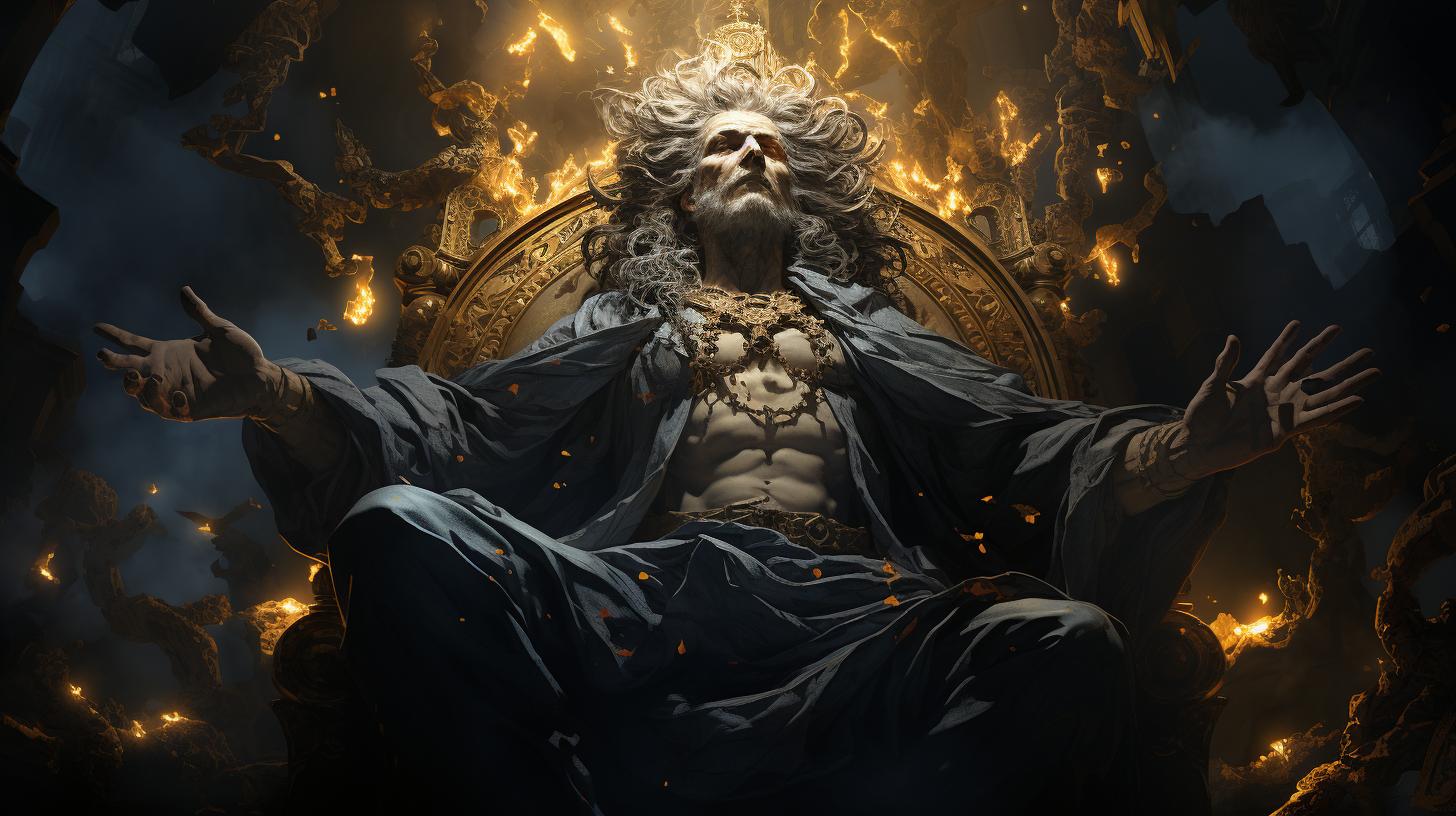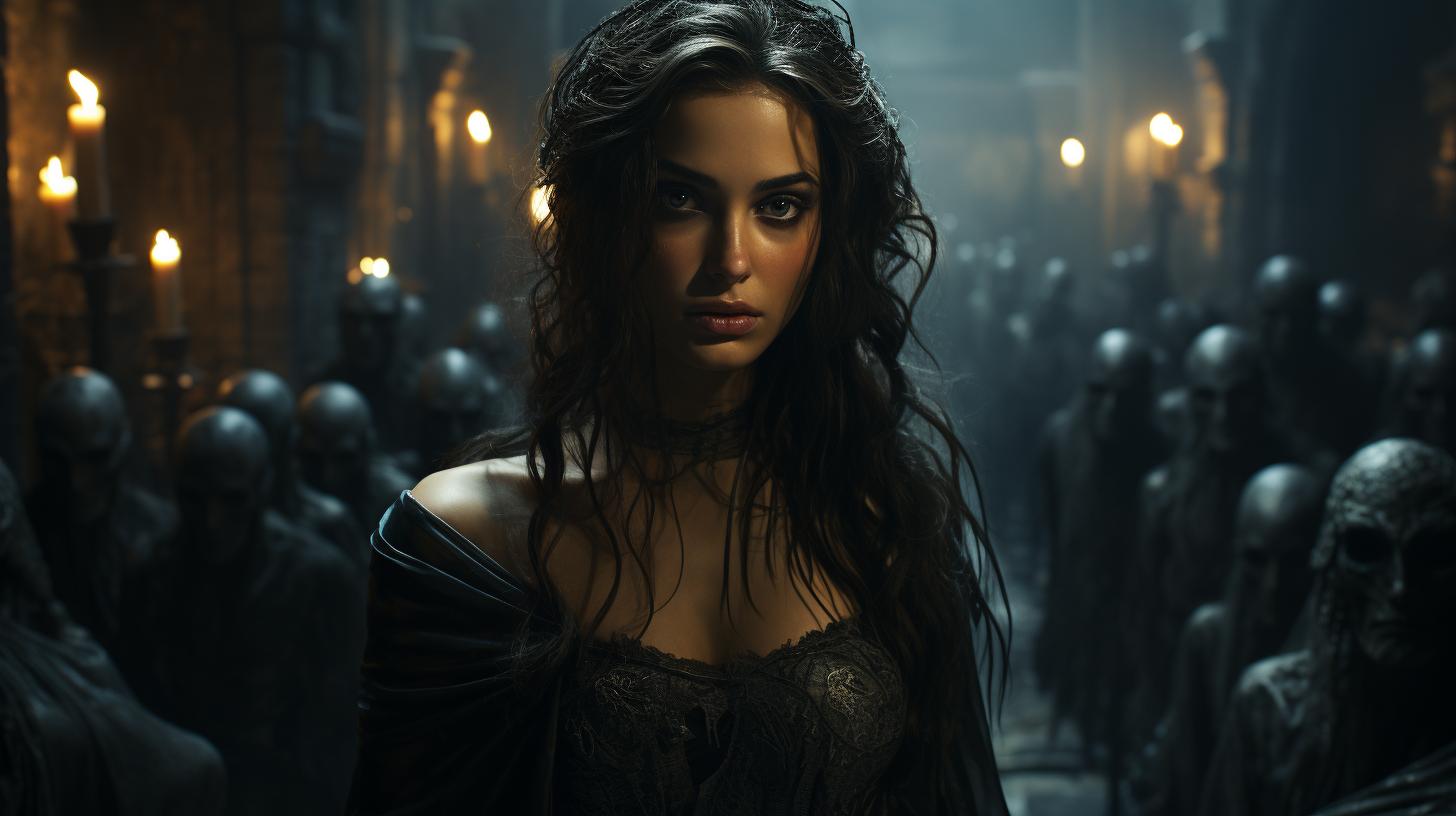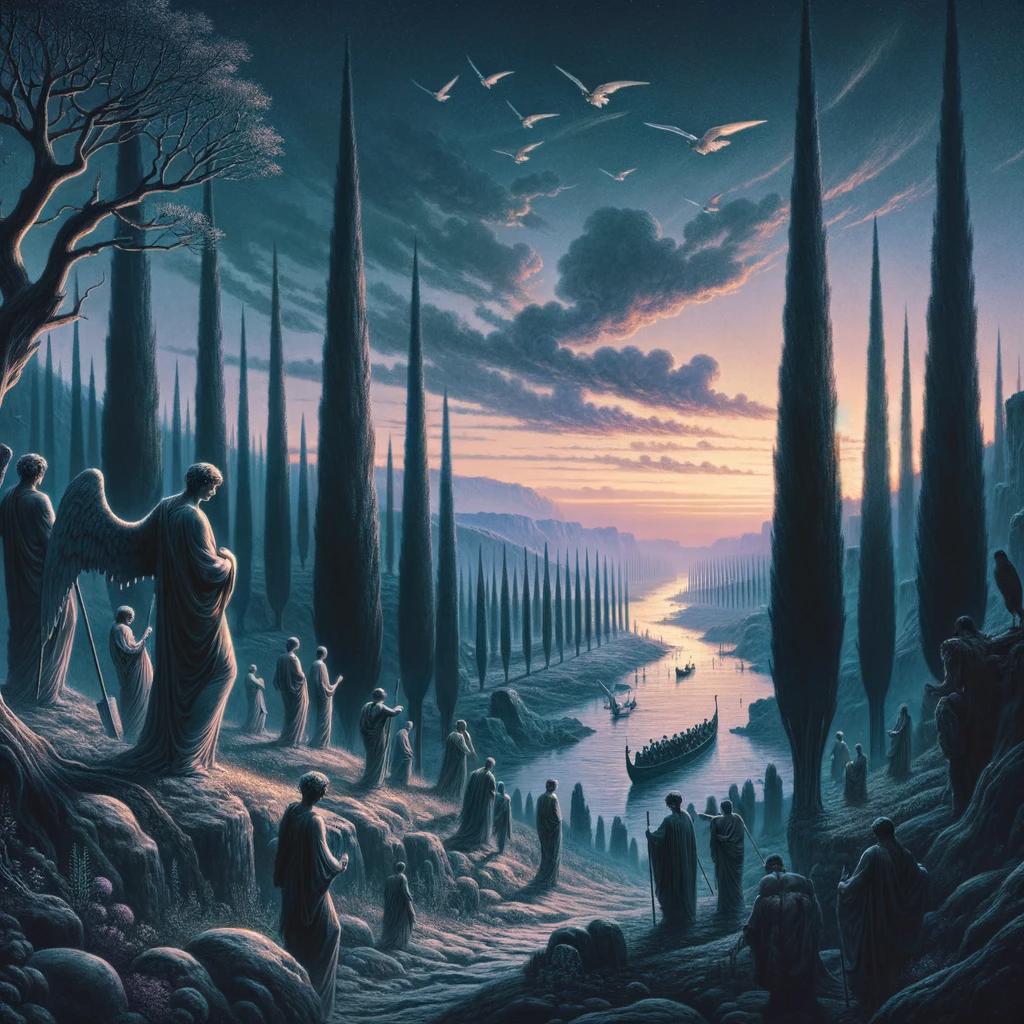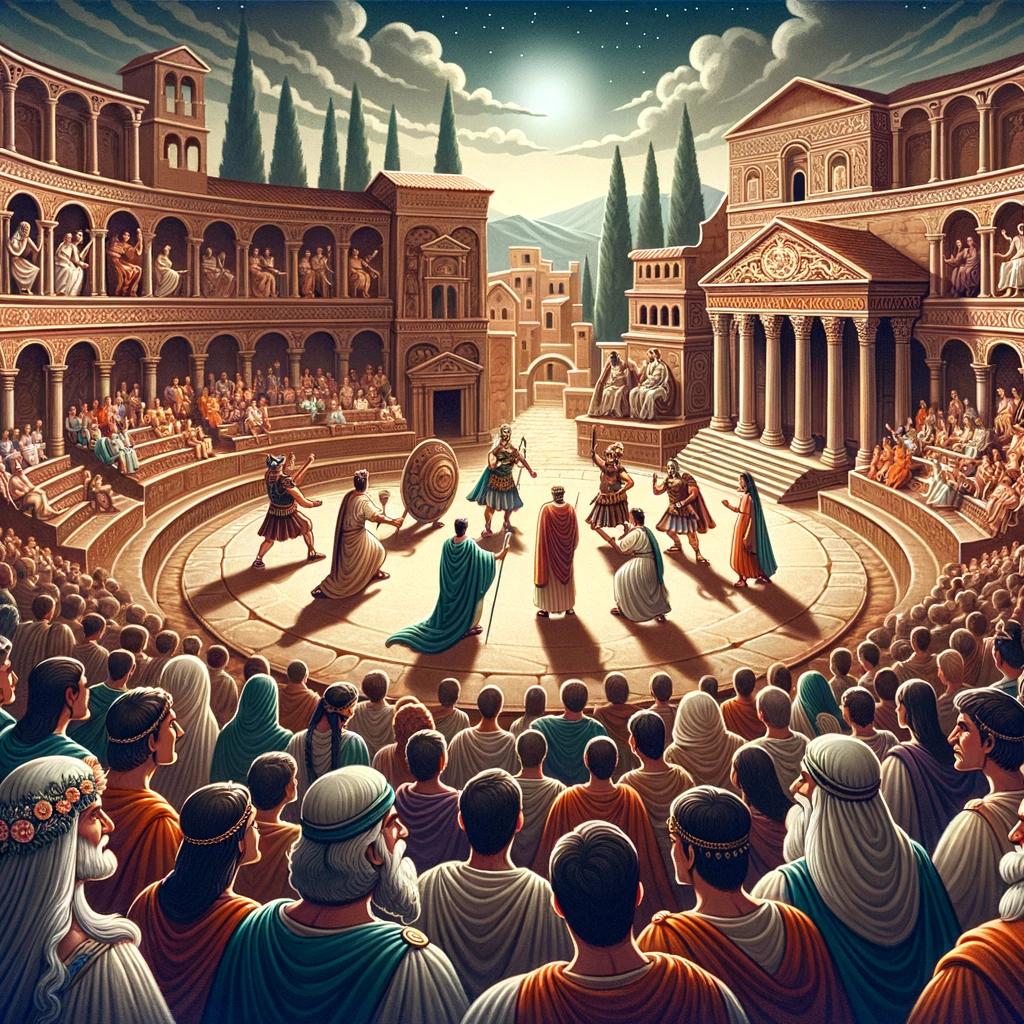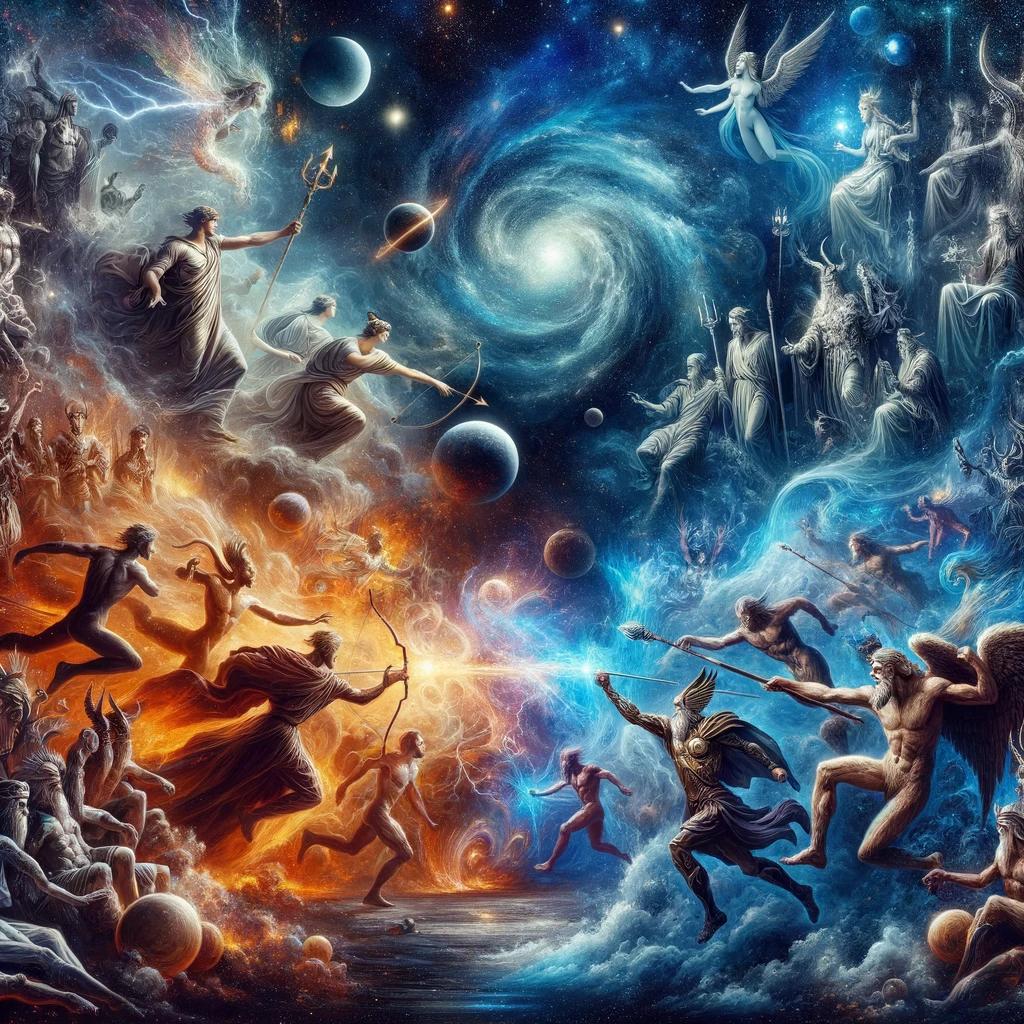Dis Pater Roman God: Unveiling the Secrets of the Roman Underworld Deity
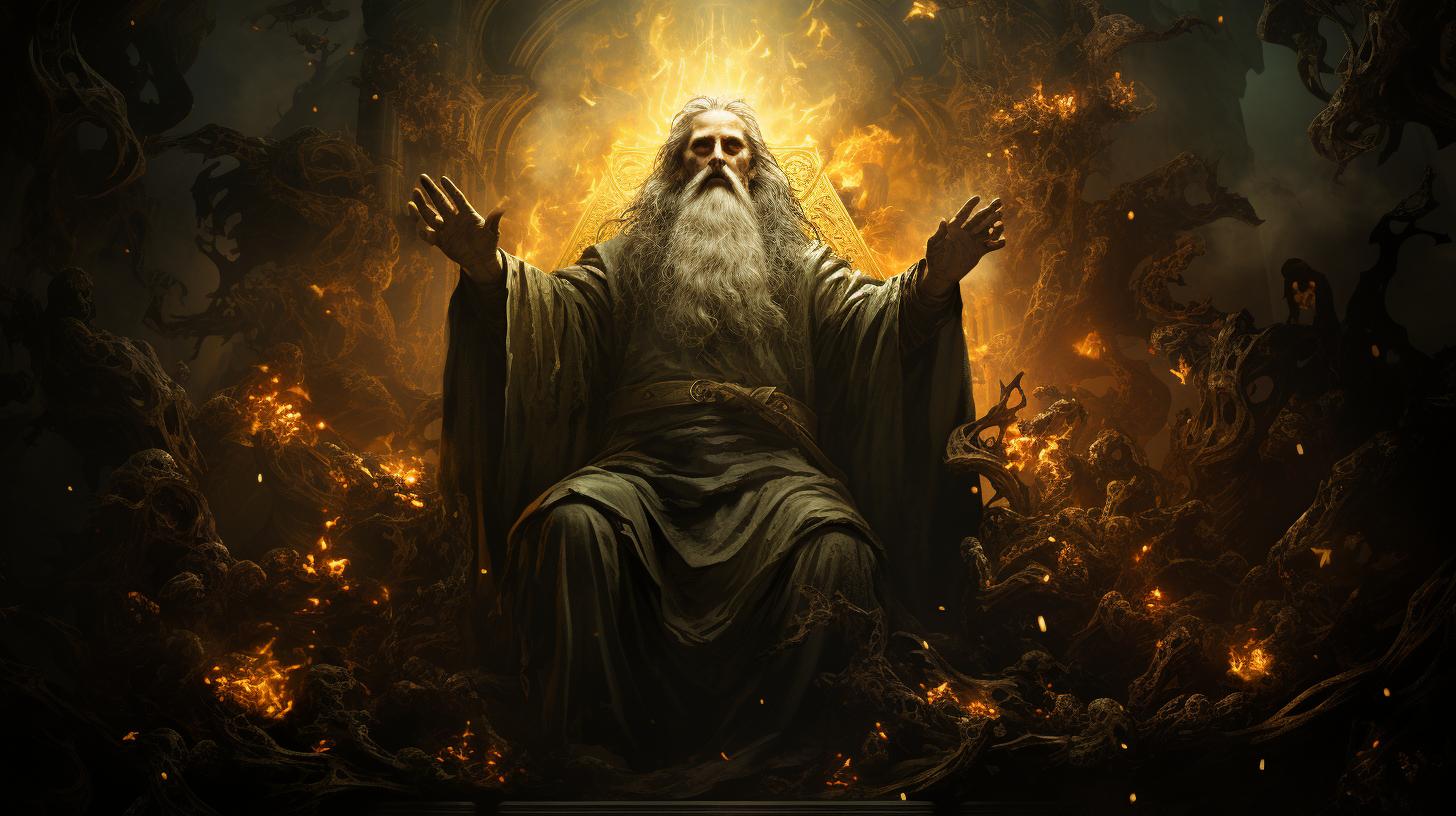
Dis Pater, the Roman god of the underworld, was both feared and revered in Roman religion. Often equated with the Greek god Hades, Dis Pater held dominion over death and the realms beneath.
Originally associated with wealth and fertile lands, Dis Pater’s identity evolved as he merged with the Greek deity Pluton/Hades. Alongside his wife Proserpina, he ruled the underworld. While Dis Pater did not have a widespread cult, he symbolically represented death and received sacrifices during special festivals.
This article provides an overview of Dis Pater’s mythology and his significance in Roman spirituality.
Overview of Dis Pater Roman God
Dis Pater, a prominent figure in Roman mythology, was revered as the god of the underworld and held great power over death and the realms beyond. This enigmatic deity, equivalent to the Greek deities Hades and Pluton, was feared and respected by the Romans.
Initially associated with wealth and fertile lands, Dis Pater underwent a transformation and became synonymous with the ruler of the underworld.
In this section, we will delve into the origins and mythology surrounding Dis Pater, exploring his connection with the Greek deities and examining his role in Roman religion. We will uncover the fascinating journey of Dis Pater from a god of wealth to a god of the underworld, shedding light on the symbolic significance of his divine rule alongside his wife, Proserpina.
Additionally, we will explore the intriguing Gallic connection between Dis Pater and the Gaulish deity Cernunnos, as well as the festivals and worship dedicated to this enigmatic figure.
Join us as we uncover the mysteries and unravel the complexities surrounding Dis Pater, shedding light on his symbolism and representation in art, literature, and his association with other foreign deities.
The captivating stories and intricate myths surrounding Dis Pater will provide a deeper understanding of this fascinating Roman god and his significant role in ancient mythology.
Origins and Mythology
Dis Pater, the Roman god of the underworld, has ancient origins intertwined with Roman and Greek mythology. He was initially revered as the god of wealth and fertile lands before assimilating with the Greek deity Pluton/Hades.
Dis Pater’s divine lineage was believed to situate him as a brother to Jupiter, the king of the gods.
According to Roman mythology, Dis Pater ruled the realm of the dead, becoming a significant figure associated with death and the underworld. His mythological attributes drew parallels to the Greek god Hades, highlighting their shared dominion over the subterranean realms.
The assimilation of Dis Pater with Pluton/Hades brought forth a new chapter in mythology, honing in on the deity’s role as the ruler of the underworld. This transformation saw Dis Pater gain prominence as a mythical figure symbolizing the enigmatic and feared aspects of death.
His marriage to Proserpina, a goddess representing the cycle of life and death, further emphasized Dis Pater’s role as a divine ruler of the underworld. Together, they presided over the souls of the deceased and governed the intricate mechanisms of the afterlife.
Dis Pater and Hades: A Comparative Analysis
Dis Pater, the Roman god of the underworld, shares a striking resemblance to the Greek deity Hades. Both gods preside over the realm of the dead and hold significant power in their respective mythologies.
Although they are often considered equivalent, there are subtle differences between the two.
While Dis Pater was originally revered as a god of wealth and fertile lands, Hades has always been predominantly associated with the underworld and the souls of the deceased.
Dis Pater’s assimilation into the role of an underworld deity occurred later in Roman mythology.
Additionally, Hades is portrayed as a more enigmatic figure, often depicted as stern and unyielding in Greek art and literature.
In contrast, Dis Pater is often depicted as a regal figure, embodying the authority and sovereignty over the afterlife.
Despite these differences, both Dis Pater and Hades govern the underworld alongside their respective consorts, Proserpina and Persephone.
They hold the power to judge and allocate the souls of the deceased to their proper destinations in the afterlife.
Overall, the similarities between Dis Pater and Hades suggest a strong influence of Greek mythology on Roman religious beliefs.
These deities serve as fascinating examples of the convergence and syncretism of ancient Mediterranean cultures.
Dis Pater’s Role in Roman Religion
In Roman religion, Dis Pater played a crucial role as a deity associated with the underworld and death. He was highly revered and feared by the Romans, who believed in his power and influence over the afterlife.
As the equivalent of the Greek deity Hades, Dis Pater held authority over the souls of the deceased and the realm of the dead.
Devotion to Dis Pater was primarily expressed through special festivals and offerings, where sacrifices were made in his honor.
Romans sought his favor and protection, hoping for a smooth passage into the world beyond. Dis Pater, in his capacity as a god of the underworld, held immense significance in the religious beliefs and practices of ancient Rome.
In addition to his association with death and the afterlife, Dis Pater was also connected to other deities within the Roman pantheon. He shared divine rulership of the underworld with his wife, Proserpina, who was also a goddess of death.
Dis Pater’s status as the brother of Jupiter further emphasized his importance in the Roman religious framework.
Overall, Dis Pater’s role in Roman religion encompassed his authoritative position as the god of the underworld, his association with death and the afterlife, and his connection to other deities within the pantheon.
The reverence and fear accorded to Dis Pater underscored his vital role in the belief system and religious practices of the Roman people.
Dis Pater’s Transformation from God of Wealth to God of the Underworld
Dis Pater, originally revered as a deity associated with wealth and fertile lands, underwent a significant transformation in Roman mythology.
Over time, he assimilated with the Greek god Pluton and became associated with the underworld and the realm of the dead. This transformation expanded his domain, and Dis Pater became recognized as a god who governed the afterlife.
The evolution from a god of riches to a god of the underworld likely signifies a shift in the Roman perception of death and the afterlife. As the Roman society developed, so did their beliefs and concepts surrounding the realm beyond life.
Dis Pater’s association with wealth and abundance merged with the notion of earthly possessions being left behind in death, transitioning him into a divine figure tied to the mysteries of the underworld.
This transition aligned Dis Pater’s attributes and characteristics with those of the Greek god Hades. As Dis Pater merged with Pluton, he adopted aspects of Greek mythology, further solidifying his association with the underworld.
It is through this transformation that Dis Pater gained prominence as a significant deity in Roman religion, intertwined with the cycle of life and death.
Dis Pater and Proserpina: The Divine Rulers of the Underworld
In Roman mythology, Dis Pater and Proserpina held the esteemed positions of divine rulers in the realm of the underworld.
As the god of the underworld, Dis Pater governed the souls of the deceased and ruled over the afterlife. His wife, Proserpina, also known as Persephone, played a significant role in this realm, serving as the queen of the underworld.
To the Romans, Dis Pater and Proserpina symbolized the cycle of life and death. While Dis Pater represented the dark and somber aspects of death, Proserpina brought forth the promise of rebirth and renewal.
Their union embodied the duality of existence, reflecting the perpetual cycle of nature and the human experience.
Together, Dis Pater and Proserpina presided over the souls in the underworld, ensuring order and justice prevailed.
They were revered and respected, with worshipers offering sacrifices and participating in special rituals dedicated to their divine presence. The rituals and festivals held in their honor aimed to establish a connection between the mortal realm and the realm of the departed, seeking blessings and guidance from the divine rulers.
Furthermore, their influence extended to art and literature, where they were depicted in various forms, often accompanied by symbolism associated with death and the underworld. Their portrayal in artistic creations aimed to evoke contemplation and reflection on mortality and the mysteries of the afterlife.
The powerful and enigmatic duo of Dis Pater and Proserpina held a prominent place in Roman mythology, ensuring the harmony and balance between life and death, light and darkness, and the mortal and divine realms.
The Gallic Connection: Dis Pater and Cernunnos
In the realm of Roman and Gallic mythology, a unique and intriguing connection emerges between Dis Pater, the Roman god of the underworld, and Cernunnos, a prominent deity among the Gauls.
Despite their distinct cultural origins, these two gods share certain similarities in their significance and symbolism.
Cernunnos, often depicted as a horned god associated with nature, animals, and fertility, bears resemblances to Dis Pater in terms of their roles as powerful deities of the underworld and the afterlife.
The Gauls, like the Romans, revered Dis Pater as an ancestral figure and equated him with their own deity, Cernunnos.
It is believed that the fusion between Dis Pater and Cernunnos occurred during the Roman conquest of Gaul, leading to the cultural merging of beliefs and the assimilation of gods.
This syncretism demonstrates the interconnectedness and adaptability of ancient mythologies.
The Gallic connection further exemplifies the syncretic nature of Roman religious practices, showcasing how Roman deities integrated with local beliefs and traditions as the empire expanded.
- The parallels between Dis Pater and Cernunnos reveal the universality of concepts surrounding the underworld and the worship of ancestral entities in different cultures.
- This connection also serves as a testament to the significance of cross-cultural interactions and the influence of Roman imperialism on religious practices.
- Through the assimilation of Dis Pater and Cernunnos, a synthesis of beliefs occurred, enriching both Roman and Gallic mythologies with newfound depth and meaning.
The Gallic connection between Dis Pater and Cernunnos invites us to explore the captivating crossroads of mythology, where gods transcend boundaries and create intriguing cultural intersections.
Festivals and Worship of Dis Pater
Dis Pater, the enigmatic Roman god of the underworld, was revered through special festivals and worship ceremonies. These solemn occasions allowed the Romans to pay homage to this deity and seek his favor and protection in matters related to death and the afterlife.
One of the most prominent festivals dedicated to Dis Pater was the centennial celebration, held every hundred years in his honor. This grand event consisted of elaborate rituals, processions, and sacrifices, all aimed at appeasing and honoring the god of the underworld.
Festival of the Shades
One significant ritual associated with Dis Pater was the Festival of the Shades, observed annually. During this ceremony, the Romans would gather and offer libations and sacrifices at altars dedicated to Dis Pater and other deities associated with the underworld.
Offerings and Sacrifices
In addition to festivals, regular offerings and sacrifices were made to Dis Pater to invoke his benevolence and ward off any misfortune related to death. These offerings primarily consisted of food, drink, and symbolic items associated with the realm of the dead, such as coins or small statues.
Worshipers sought to establish a connection with Dis Pater, asking for his guidance and protection in the journey to the afterlife. They believed that by honoring him through these rituals, they could ensure a smooth transition and a favorable fate in the realm of the dead.
Overall, the festivals and worship of Dis Pater played a crucial role in Roman religious practices, reflecting the Roman belief in the power and significance of the god of the underworld.
Symbolism and Representation of Dis Pater in Art and Literature
The depiction of Dis Pater in art and literature provides insights into the symbolism and cultural significance associated with this Roman god. Artists and writers often portrayed Dis Pater in various forms to convey his role as the ruler of the underworld and the personification of death.
In visual representations, Dis Pater is depicted as a mature male figure with a grave countenance, wearing a crown and holding a scepter, symbolizing his authority over the realm of the dead.
Sometimes, he is shown alongside his wife Proserpina, emphasizing their joint rule over the underworld.
The symbol of Dis Pater frequently incorporates elements associated with the underworld, such as the serpent, symbolizing rebirth and the cycle of life and death.
The bident, a two-pronged weapon, is another prominent symbol associated with Dis Pater, which represents his power over the souls of the deceased.
In literature, Dis Pater is often mentioned in ancient texts, poems, and mythological narratives.
His presence is used to evoke a sense of mystery, darkness, and the inevitability of death. Writers drew upon his association with wealth, the afterlife, and divine rulership to emphasize his larger-than-life persona.
Overall, the symbolism and representation of Dis Pater in art and literature reflects the Roman society’s fascination with death, the supernatural, and the concept of an afterlife. Through these creative expressions, Dis Pater’s significance as a deity embodying the mysteries of the underworld is perpetuated and passed down through generations.
Dis Pater’s Association with Other Foreign Deities
Dis Pater, the Roman god of the underworld, was not only associated with the Greek deity Hades but also had connections with other foreign deities. One such deity is Soranus, a Phrygian god of the underworld and fertility.
Dis Pater’s association with Soranus can be attributed to the cultural exchanges and interactions between the Romans and the Phrygians.
Another foreign deity associated with Dis Pater is Aericura, a goddess of the Underworld worshipped by the Gauls.
This connection suggests that Dis Pater’s influence extended beyond the boundaries of Rome, resonating with the beliefs and practices of the Gaulish people.
These associations highlight Dis Pater’s role as a deity that transcended borders and incorporated elements from various cultures.
The blending of different mythological traditions allowed for a more diverse and inclusive understanding of the underworld and its divine rulers.
Through his associations with Soranus and Aericura, Dis Pater showcased the interconnectedness of different pantheons and emphasized the universal themes of death, fertility, and the afterlife.
See Also: Related Deities in Roman and Greek Mythology
As we explore the realm of Dis Pater, it is essential to acknowledge the interconnected web of deities within Roman and Greek mythology. These related deities provide valuable insights into the divine tapestry of the ancient world.
- Pluton/Hades: Delve into the parallels between Dis Pater and his Greek counterpart, Hades, the ruler of the underworld. Discover the shared mythology and the nuanced differences between these powerful deities.
- Proserpina/Persephone: Uncover the story of Dis Pater’s wife, Proserpina, and her Greek counterpart, Persephone.
Explore their roles as goddesses of the underworld and their significance in the cycle of life and death.
- Orcus: Examine the relationship between Dis Pater and Orcus, an alternative name for the Roman god associated with death and the afterlife.
Discover the nuances in their depiction and the role they play in Roman mythology.
- Cernunnos: While not specifically part of Roman or Greek mythology, Cernunnos is worth mentioning due to the Gauls’ association between Dis Pater and this deity.
Explore the connections and possible influences between these ancient pantheons.
- Soranus and Aericura: Learn about the other foreign deities associated with Dis Pater and their roles within Roman religious practices. Uncover the cultural exchange that occurred between the Romans and these external belief systems.
By exploring these related deities, we gain a better understanding of Dis Pater’s context within the rich tapestry of Roman and Greek mythology, enhancing our appreciation of his significance and influence.
Frequently Asked Questions about Dis Pater Roman God
- What were the main attributes and powers of Dis Pater?
- How does Dis Pater compare to Hades in Greek mythology?
- How did Dis Pater transition from a god of wealth to a god of the underworld?
- Who was Proserpina and how does she relate to Dis Pater?
- Were there any festivals or worship practices dedicated to Dis Pater?
Dis Pater was primarily associated with the realms of death and the underworld in Roman mythology. He possessed the power to rule over the souls of the deceased and was feared by the Romans as the god of death.
Dis Pater and Hades share many similarities, as they both represent the god of the underworld in their respective mythologies. They are often considered equivalent deities, with similar attributes and roles in their respective pantheons.
Originally associated with wealth and fertile lands, Dis Pater underwent a transformation to become the god of the underworld.
This assimilation with the Greek deity of the underworld, Hades, resulted in his adoption of the role and powers associated with the realms of death.
Proserpina, the wife of Dis Pater, was also a goddess of death in Roman mythology.
Together, they ruled over the underworld and represented the cycle of life and death.
Dis Pater was honored through special festivals and occasional sacrifices.
In particular, a major festival dedicated to him was held every one hundred years, demonstrating the reverence and fear the Romans held towards the deity of death.
These frequently asked questions provide insights into the nature of Dis Pater, shedding light on his powers, associations, and worship practices within Roman mythology and religion.
.











